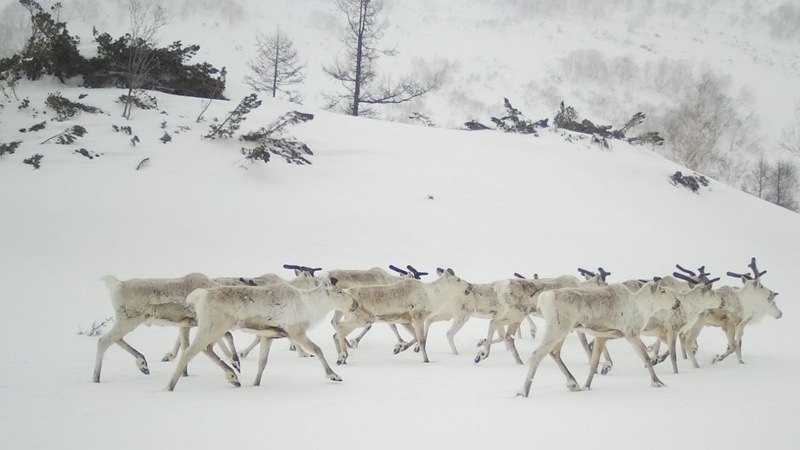
As winter approaches the pristine wilderness of Russia’s Kamchatka Peninsula, one of Mother Nature’s most enduring spectacles unfolds within the Kronotsky Nature Reserve. The region’s last significant herd of wild reindeer has commenced its annual, arduous migration, a critical journey from their summer-autumn grazing grounds towards the rugged, snow-swept mountain ranges. This ancient movement, triggered by the conclusion of the rutting season, is meticulously timed to coincide with the period when the nascent snow cover on the slopes remains shallow enough to allow the majestic animals unimpeded passage to their winter havens.
These iconic creatures, a vital part of Kamchatka’s delicate ecosystem, face a trek of up to one hundred kilometers. Their path winds from the vast Kronotsko-Bogachevskaya tundra and other lowland areas into the high altitudes, along routes etched by generations of their ancestors. The primary driver for this perilous journey is the desperate search for sustenance during the harshest months. In the higher elevations, fierce winds act as nature’s snowplows, clearing patches of ground and exposing the precious lichen – their main food source – allowing the reindeer to conserve vital energy that would otherwise be spent excavating deep snowdrifts. They will remain in these winter pastures until roughly mid to late March, before beginning their descent back to the lowlands.
Scientific observations reveal the intricate social dynamics of the herd during this critical phase. Vladimir Gordienko, a research fellow at the Kronotsky State Nature Reserve, confirms that the intense mating season has concluded. Presently, the reindeer are forming large clusters, predominantly composed of females safeguarding their young. The male reindeer, having expended considerable energy during the rut, shed their antlers at this time and typically disperse, preferring solitude or small bachelor groups. This collective structure, driven by instinct and survival, allows the population to ascend to the exposed, wind-swept mountain areas before critical snowfalls cut off their access.
This particular reindeer population commands special attention due to its extreme uniqueness and inherent vulnerability. Numbering approximately 800 individuals, it stands as the singular large wild reindeer aggregation that has managed to persist on the Kamchatka Peninsula, a stark reminder of the global decline in wild ungulate populations. While classified as the Okhotsk subspecies, meticulous genetic research has uncovered distinct markers setting Kamchatka’s reindeer apart from their relatives on the mainland Chukotka and Magadan regions, underscoring their irreplaceable genetic heritage. Their precarious status is formally recognized by their inclusion in Russia’s Red Book of endangered species, elevating their conservation to an urgent international priority.
In a proactive stride towards safeguarding this rare and distinct species, a crucial three-year conservation project was launched in 2024. This vital initiative benefits from the generous support of the ‘Preservation of Ecological Systems of the Far East and Siberia’ Charitable Foundation, demonstrating a collaborative approach to environmental protection. The significant funding injection has allowed for a substantial overhaul and modernization of the reserve’s protection services. State inspectors, the frontline guardians of this fragile ecosystem, have been equipped with advanced winter gear and modern radio communication systems. Furthermore, remote ranger stations have been outfitted with cutting-edge equipment for uninterrupted satellite connectivity, ensuring constant communication and rapid response capabilities. Perhaps most innovatively, unmanned aerial vehicles (UAVs) have been acquired, enabling comprehensive long-distance monitoring of the herd’s movements and overall condition, minimizing human disturbance.
Vsevolod Yakovlev, the acting director of the Kronotsky State Nature Reserve, underscored the profound importance of these efforts, stating that ‘the preservation of the region’s biological diversity, and particularly its rare species, represents a strategic imperative for our institution.’ He specifically acknowledged that the enhanced protection of critical winter habitats has been made possible through the crucial partnership with the foundation, emphasizing its pivotal role in determining the fate of these Red Book-listed animals. This concerted effort in Kamchatka offers a beacon of hope, illustrating how dedicated collaboration and modern technology can empower conservationists in their relentless fight to protect the planet’s most vulnerable treasures for future generations.